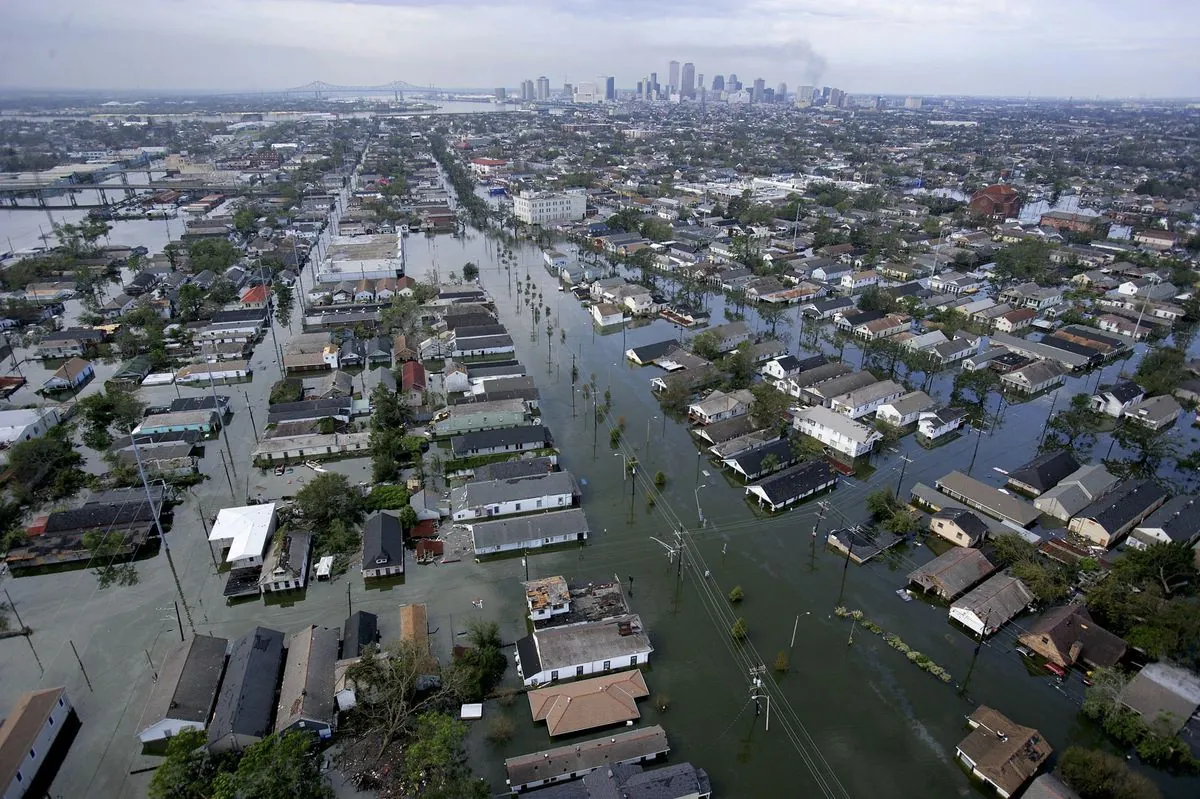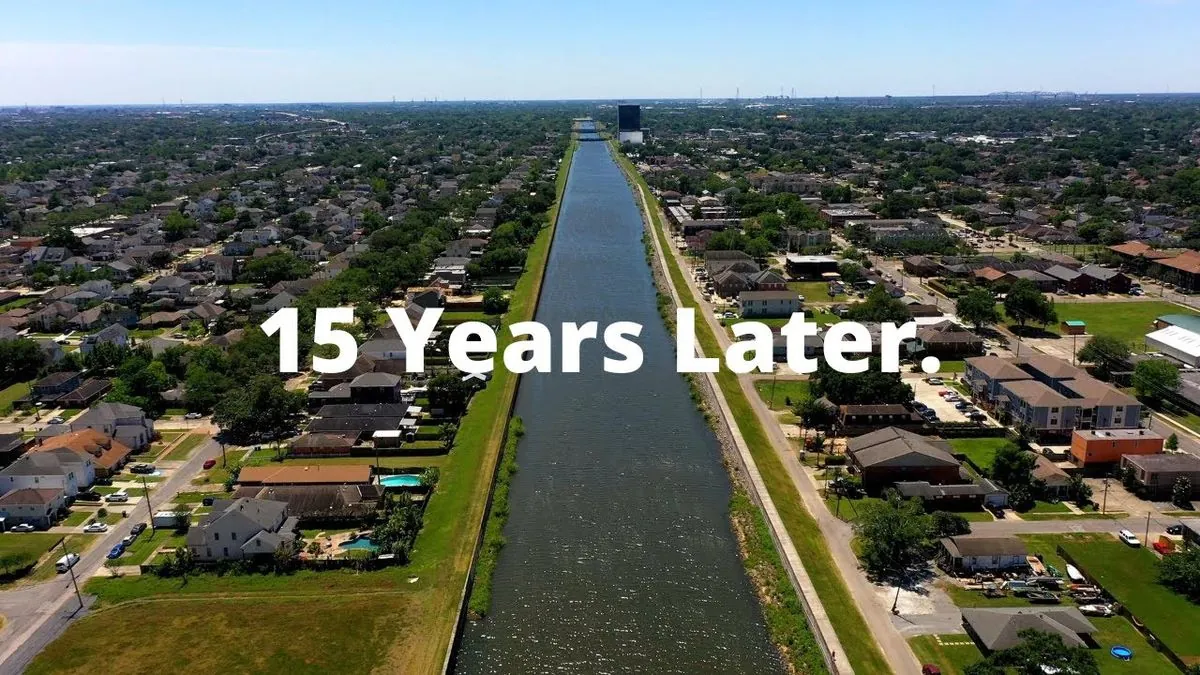New Orleans Grapples with Flooding as Hurricane Francine Tests Drainage System
Hurricane Francine inundated New Orleans, challenging its complex drainage infrastructure. The city's unique geography and historical flood management efforts face ongoing climate-related challenges.

On September 11, 2024, Hurricane Francine made landfall in Louisiana, causing significant disruption to New Orleans and surrounding areas. The storm's impact highlighted the ongoing challenges faced by this unique city in managing floodwaters.
New Orleans, a city with a rich history dating back to its founding in 1718, is situated in a precarious geographical location. Built on the Mississippi River delta, much of the city lies below sea level, making it particularly vulnerable to flooding. This low-lying position has necessitated the development of an intricate system of flood protection and drainage infrastructure over the centuries.
The city's primary defense against storm surges and river flooding is its extensive levee system. Following the devastating impact of Hurricane Katrina in 2005, which resulted in the loss of nearly 1,400 lives, the federal government invested over $14 billion in a 133-mile protection system. Ricky Boyett, a spokesperson for the Army Corps of Engineers, noted that the levees performed well during Francine, with storm surge levels reaching only 3 to 5 feet against walls designed to withstand up to 16 feet.

However, the very infrastructure designed to keep water out can also trap rainfall within the city limits. New Orleans relies on a complex network of pumps and canals to manage internal flooding. Ghassan Korban, executive director of the Sewerage and Water Board of New Orleans, explained the system's capacity: "When a raindrop falls on the city, it goes into catch basins, the catch basin — a minor drainage system — conveys that water into larger pipes or canals and the canals drain that water to those individual pumping stations."
This drainage system, parts of which date back a century, includes 24 pumping stations and 99 major pumps. The infrastructure is massive, with some canals large enough to accommodate a bus. However, the system faces challenges, including aging equipment and power supply issues.
Hurricane Francine dumped over 7 inches (18 centimeters) of rain in some areas, overwhelming the drainage capacity and causing localized flooding. The storm's impact serves as a reminder of the ongoing struggle to keep New Orleans dry.
Richard Campanella, a professor at Tulane University's School of Architecture, aptly described the situation: "Effectively, the swamp of centuries ago comes back to life, and communities built on those drained lowlands get water in their houses and cars during bad storms."
Recent years have seen efforts to improve the city's flood management. Following a major rainstorm in 2017, significant changes were made to the management of the drainage system. Additional projects have included the construction of stormwater retention ponds and improvements to power reliability.
[[Louisiana Gov. Jeff Landry]]
"It's so we can plug rainfall amounts into a model and more accurately predict what those disasters are going to look like and what resources are going to be needed."
The challenges faced by New Orleans are likely to intensify with climate change. Dominic Boyer, a professor at Rice University, warned that the increasing frequency and intensity of storms would put further strain on the existing infrastructure.
As New Orleans continues to adapt to its unique environmental challenges, the city's resilience and innovative approaches to water management will be crucial in preserving its rich cultural heritage and ensuring its future viability.


































